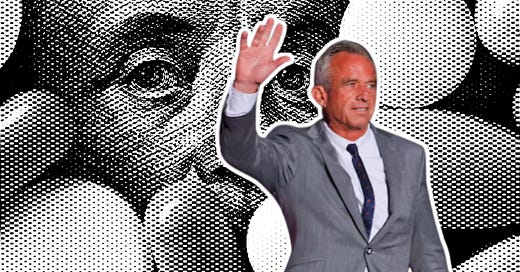Over the past few election cycles, there seems to be a rise in populism often tied to establishment skepticism within party politics, and this trend only increased during the 2024 presidential election campaign season. With this increased demographic populating the political sphere, conversations about whether or not the government meets the people's interests occur. Phrases such as corporate capture or the simple concept of conflicts of interest are facets of common knowledge much more so than they used to be. With the recent confirmation of Robert F. Kennedy Jr. as Health and Human Services Secretary, accompanied by his commitment to weeding out corporate capture of the government’s health agencies, it would be fitting to explore why the United States makes up fifty-three percent of the world’s pharmaceutical market while still boasting the most amount of chronic disease and the highest drug prices on average compared to any other country.
As alluded to, the United States is responsible for $848 billion out of the $1.6 trillion market size in the global pharmaceutical market. With this in mind, it is conceivable that the purchasing power of the average American would positively reflect that of our fifty-three percent market share. Unfortunately, the reality is quite the opposite. On average, the price of pharmaceuticals in the United States is 2.78 times higher than that of other countries. What obfuscates the equation even further is that America also manufactures nearly fifty-three percent of active pharmaceutical ingredients (API) while charging Americans more and increasing their prices yearly. Due to the deregulated nature of the American pharmaceutical market, companies are incentivized to charge as much as the market can handle. Although this is a reality, there is an even more significant differentiator between the United States and its European counterparts— the dynamic between government and private insurance dealings.
Often, pharmaceutical companies will refrain from explaining why drug costs exceed that of Research and Development (R&D), and beyond this, companies will raise prices without a visible increase in R&D spending. That said, most people don’t buy medications directly from the manufacturer. Instead, a mediator, the insurance company, will negotiate these drug prices on the consumer’s behalf. Pharmacy benefit managers (PBMs) negotiate upfront discounts and even rebates in favor of health insurance companies. This results in almost guaranteed increased utilization of these drugs within the patients' health plans. Often, patients won’t even be aware of the discounts offered to insurance companies, a dilemma that sets the stage for a more significant chance of pharmaceutical price increases. As can be inferred, this is an issue particularly present within private insurance companies. Having mentioned this, more than one-third of Americans are on government healthcare (Medicare and Medicaid), and still face similar difficulties related to prices.
It is no secret that behind most actions of government legislation is money and those who shuffle it around. This is abundantly true for the perverse incentives that drive the pharmaceutical industry in many cases. Over the past two decades, the most lobbied industry has been pharmaceutics and health products, which amounted to about $6.2 trillion in total money allocated. Lobbyists, particularly in our nation’s Capital, communicate directly with government officials to extract favorable legislation for their employers. This is often done through the promise of party or campaign donations. This is wildly swaying for members of Congress, all of whom must pay their party donation quotas each year to be considered for their preferred committee or have legislation co-sponsored. The reality is that the prices of both Medicare and Medicaid continue to increase despite the exponential growth of pharmaceutical spending and the majority of pharmaceutical manufacturing occurring domestically, which would naturally ring a few alarm bells. This is because there is a present monetary conflict of interest within the government to the point of apathy for the struggles of the people who depend on pharmaceutical services.
The dilemmas occurring in both the private and public pharmaceutical industries result from the same problem— governmental interference. At first glance, this claim might seem contradictory because private companies, by definition, should be mainly independent. It is important to note that the government subsidizes public and private insurers and has advocates that work against the consumers (PBMs in private insurance and lobbyists in public insurance). Price visibility is the only thing preventing consumers from regaining control of the market in some capacity. Private insurance, by definition, is not a fully capitalist business structure because there are deliberate constrictions on competition. For example, buying health insurance outside of state lines is illegal. The growing market concentration due to the oligopolistic nature of many large pharmaceutical companies (which is incentivized by federal government funding and favorable regulations) makes it extremely difficult to compare benefits and difficulties. Price visibility is a very simple anecdote to this problem because the classic economic principle, pure competition, causes the quantity to increase, the price to decrease, and the quality to improve. The days of discrete price increases would be ushered away by the continuous monetary drive already present, and most importantly, the price of pharmaceutics could decrease dramatically, bringing about a new era of transparency.







